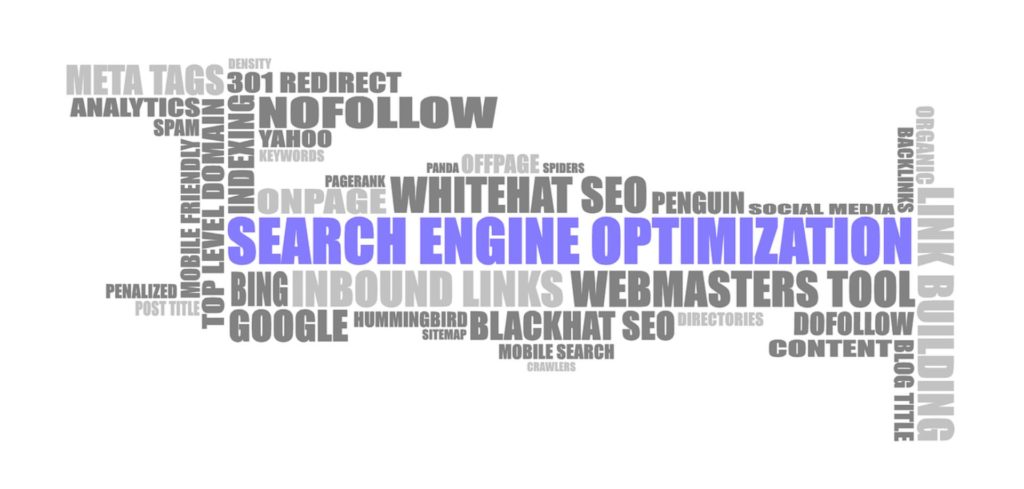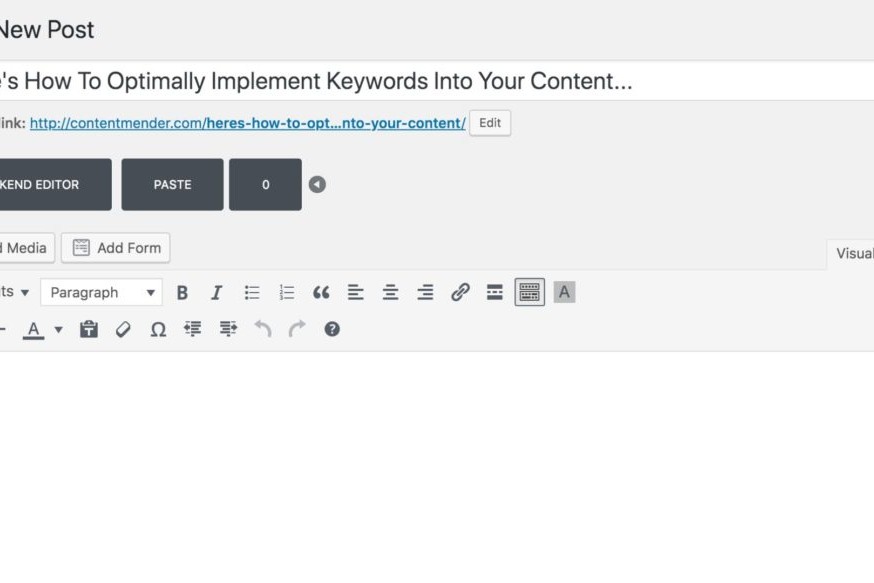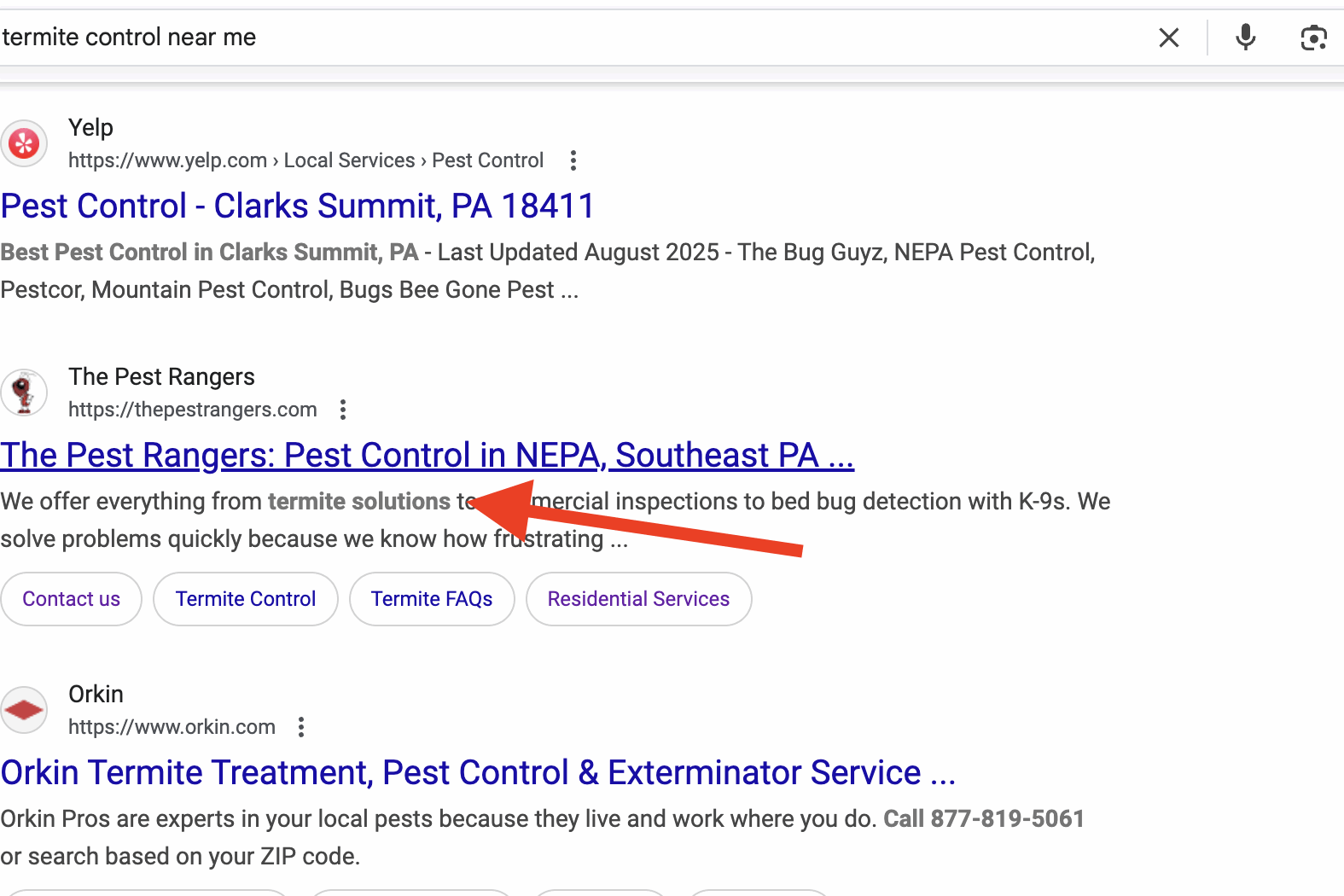SEO Beginner’s Guide to Terms, Part I
Search engine optimization (SEO) plays an important role in your overarching digital marketing strategy, but navigating through all the associated terms can be difficult — especially for SEO newbies.
But SEO doesn’t have to be complicated. Learning the lingo can help make it easier to engage in the conversations with reputable digital-marketing agencies, and practices that can take your search to the next level.
Here are a few you’ll surely encounter:
Anchor Text: Anchor text is the visibly distinct words (or characters) that indicates a hyperlink is being used to link from one page to another. Typically, these links appear in blue font, commonly with an underline, though the color and font can be changed.
On a live page, the anchor text appears as follows: SCORE Content Marketing. Where SCORE Marketing indicates the anchor text and the URL (i.e., https://contentmender.com/score-conent-marketing) represents the hyperlink.

Backlink: Backlinks, or incoming links, are links on another website that refer traffic to your site/page. Conversely, “outbound links” do the opposite, directing traffic from your site to another.
It’s likely that you’ve heard mention of backlinks, and that’s because, in the SEO world, they can be quite valuable. In search engines, keywords may suggest relevance, but backlinks double down by suggesting quality through popularity (i.e., this content must be great if so many websites are linking to it).
At one time, way back when the search was still uncharted (and unrestricted) frontier, backlinks were a dime a dozen (you could literally buy them and see results), and quantity outranked quality. Today, however, thanks to Google’s ongoing pursuit to serve users highly relevant content, the quality of backlinks goes a long way in determining a SERP location.
In other words, external quality begets internal quality. This is why we recommend strong on-site content that others will want to share to garner respectable backlinks.
Black Hat SEO: Black Hat SEO is a dubious and unethical attempt to obtain immediate results, such as a first page SERP position, within a mere an extremely short period of time. Companies that practice black hat marketing use tactics like hidden text, keyword stuffing, link farms, etc. to help clients (or themselves) get ahead in the search world.
Fortunately, Google, as well as other popular search engines, is aware of these tactics and penalizes websites that employ them. So, while those tactics may work in the short (very short) run, they can sink your SEO efforts for months, if not years, to come.
If someone is promising to get your site ranked for a specific term fast, then you’re likely working with someone who practices black hat marketing. At ContentMender, we want our clients to have long-lasting success, and so we’re transparent about expectations and take the strong and steady approach to SEO.
That means improving SERP results through quality content that earns brand recognition and loyalty, both inside and outside the SERPs.
White Hat SEO: Well, it’s the complete opposite of Black Hat SEO, and reputable agencies will do only what’s ethical. Sadly, due to many unethical digital marketing agencies, SEO is sometimes called the proverbial “snake oil” of sneaky business practice. This is obviously far from the truth, so only work with agencies that practice White Hat SEO. Again, a quick sign to run is if they promise you first-page rankings, and quick, short-term results.
Canonical URL: Duplicate content can prove to be a significant issue in the world of SEO, and so many try to avoid it at all costs; however, that’s not always possible. Take for example product pages with similar content or a website home page that can be reached through a variety of URL variations.
In order to avoid the problems associated with duplicate content, webmasters can add a rel=canonical attribute, which identifies that URL as a priority, indicating to the search engine that if similar versions exist, the canonical link is the preferred link and should be shown in search results.
Crawling: For search engines to identify and rank websites, they must “crawl,” scan, and subsequently analyze those sites. To do this, the user programs, often referred to as crawlers, bots, and spiders can identify pertinent information, like keywords.
Since SEO hinges on the relationship between a website and the search engines, many SEO experts work diligently to identify what exactly a spider or bot is looking for and how it relates to the SERP locations.
Deep Linking: Deep linking is using a link to take a site user to a specific page on your site or within an app, driving them directly towards relevant content, be is a feature category, product/service page, or call to action.
Deep linking is increasingly important in the mobile sphere, as today’s users expect a seamless experience, moving them from app to web, email to app, etc.
In addition to improving the user experience, deep linking can also help search engines identify content as highly relevant for specific keywords.
Duplicate Content: As the name suggests, duplicate content is content that appears on more than one unique URL. Why is that a problem? In terms of search, when two or more pages have the same or similar content, the search engine doesn’t know which is relevant for a specific query.
A common myth about duplicate content is that it will result in a penalty; however, the real issue is that duplicate content muddies the waters and though Google has the means to handle and select what it deems the “best” version of that copy, it’s not always the one that you want.
Further, duplicate content can prevent you from achieving desirable rankings for one page since other pages on your site are vying for the same spot.
Indexing: It’s not enough for bots or spiders to crawl your pages; the search engine must also store this data by making a copy of it and “indexing” or saving it to the database, allowing the search engine to retrieve and display the site it for relevant future searches.
Keyword: Keywords are the words, ideas, and concepts that describe the content on your site. Keywords are also the words, ideas, and concepts that a search engine user types into the search box or browser. The goal of any SEO campaign is to connect the former and the latter by establishing relevancy.
Despite the name, a keyword can be short and general (i.e., cat beds) or it can be long and specific (i.e., how to create good content).
Keyword Stuffing: Keyword stuffing is a black hat effort to trick search engines by “stuffing” content with a single keyword; the hope, of course, is that the search engine will determine the page is relevant for a keyword thus increasing search rankings.
Fortunately, that doesn’t work, and those who choose to employ this tactic will find that any gains are fleeting and replaced by a search-sinking Google penalty.
The moral of the definition? Keyword use should be natural. If it sounds forced, you’re probably stuffing the page.
Link Building: Whereas backlinks are simply the links that drive traffic from one site to another, link building is the craft by which those links are procured and leveraged. Many SEO experts consider this one of the most important aspects of SEO, and rightfully so – the right link building strategy can push a page into top SERP spots.
The end goal of any link building efforts should be to secure quality backlinks from relevant websites, which often requires that marketing professionals employ a healthy mix of creativity, sales skills, industry connections, and persistence.
 Meta Description: Meta descriptions are keyword-rich snippets that show up under a page title (in search results) and summarize the content of that specific page. A quality meta description will entice search users to click through to your site. Further, a solid click-through-rate (CTR) can support relevancy and increase your rank in search results.
Meta Description: Meta descriptions are keyword-rich snippets that show up under a page title (in search results) and summarize the content of that specific page. A quality meta description will entice search users to click through to your site. Further, a solid click-through-rate (CTR) can support relevancy and increase your rank in search results.
Organic Search: Organic search results are search results that are listed based on keywords and relevancy (there’s that word again). Organic search is based on a variety of factors, including content, traffic, CTR, backlinks, etc.
Paid Search: Paid search, on the other hand, is considered a sponsored search and is a result of a monetary transaction between the site owner and the search engine. In Google (AdWords), these results are typically flagged with the word “Ad,” indicating that they appear based on an ad campaign, not the search algorithms employed by Google.
PageRank: PageRank is a Google-specific term that likens links to vote; the pages with the most votes receive the best SERP spots. However, not all links are the same, and votes from some sites weight more than others.
SEM: Search Engine Marketing once included both search engine optimization and paid search efforts, but over time that definition evolved. Today, SEM is specifically a reference to paid search tactics like pay-per-click (PPC), cost-per-click (CPC), and other types of paid search advertising.
SERP: A SERP, an acronym frequently used in the SEO world, refers to a search engine results page, or the page(s) that displays the results of search queries. The goal is to get your page on the first SERP, preferably at the top.
Title Tag: Title tags are HTML elements that provide the title (as you may have assumed) of a specific web page, and these titles serve as the clickable headline in search results. When it comes to SEO efforts, title tags are used to help establish relevance within the search engine and attract search users. They are one of the most important elements of SEO for each particular page.
301 Redirect: A 301 redirect is considered a permanent redirect, meaning one URL was permanently directed to another URL. In this case, most of the page ranking power of the original link is passed on to the new link. These are used for a variety of reasons, including seasonality needs as well as changes to a site’s structure that make one page obsolete.
302 Redirect: A 302 is considered a temporary redirect and should only be used as such. 302 redirects can come in handy for things like A/B testing or to temporarily mask an otherwise unappealing yet temporary link (e.g., a link with a long string of parameters).
Voice Search: Voice search is the method of querying a search engine via speech as opposed to use a keyboard to enter a search query. Siri, Alexa, and Google Home, as well as many other smartphones equivalents, all rely on voice search.
For marketers, this represents a new search engine optimization opportunity, allowing them to curtail their content to be the number one result for these voice-based queries.



